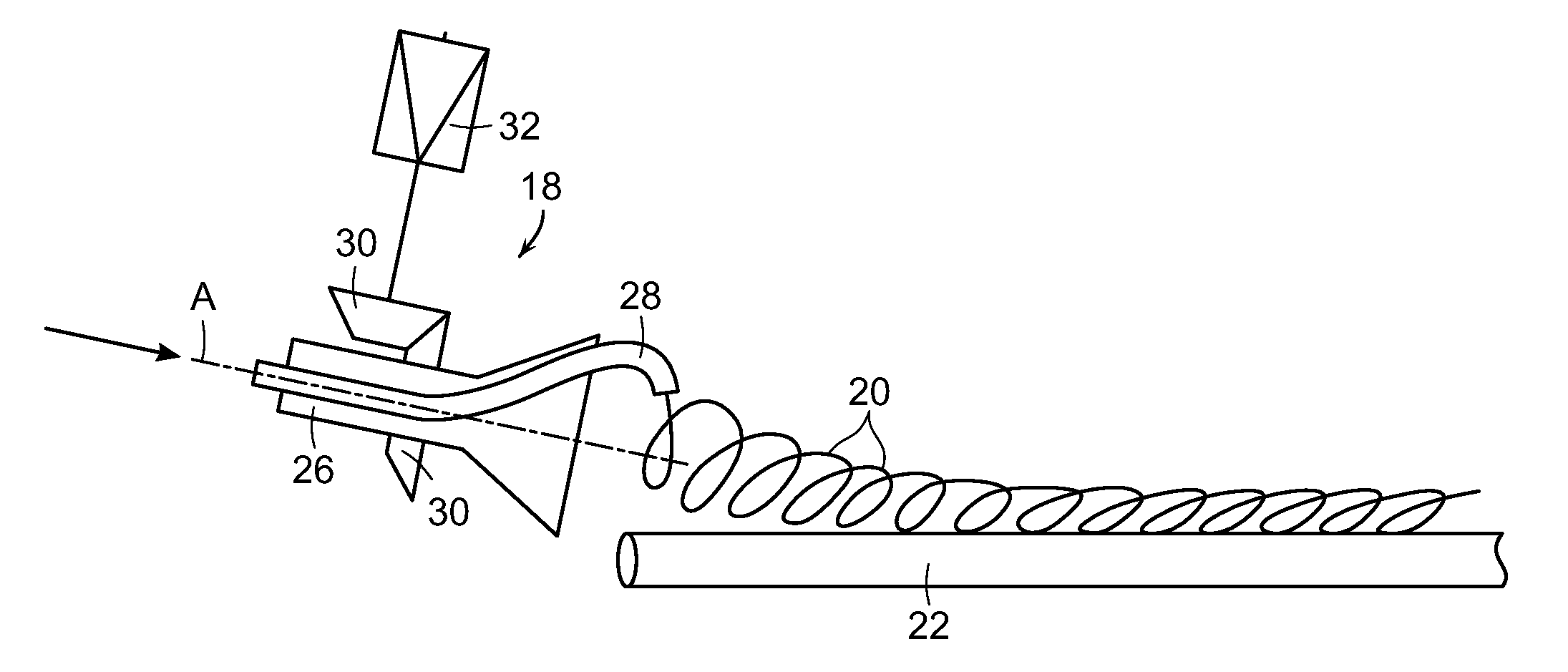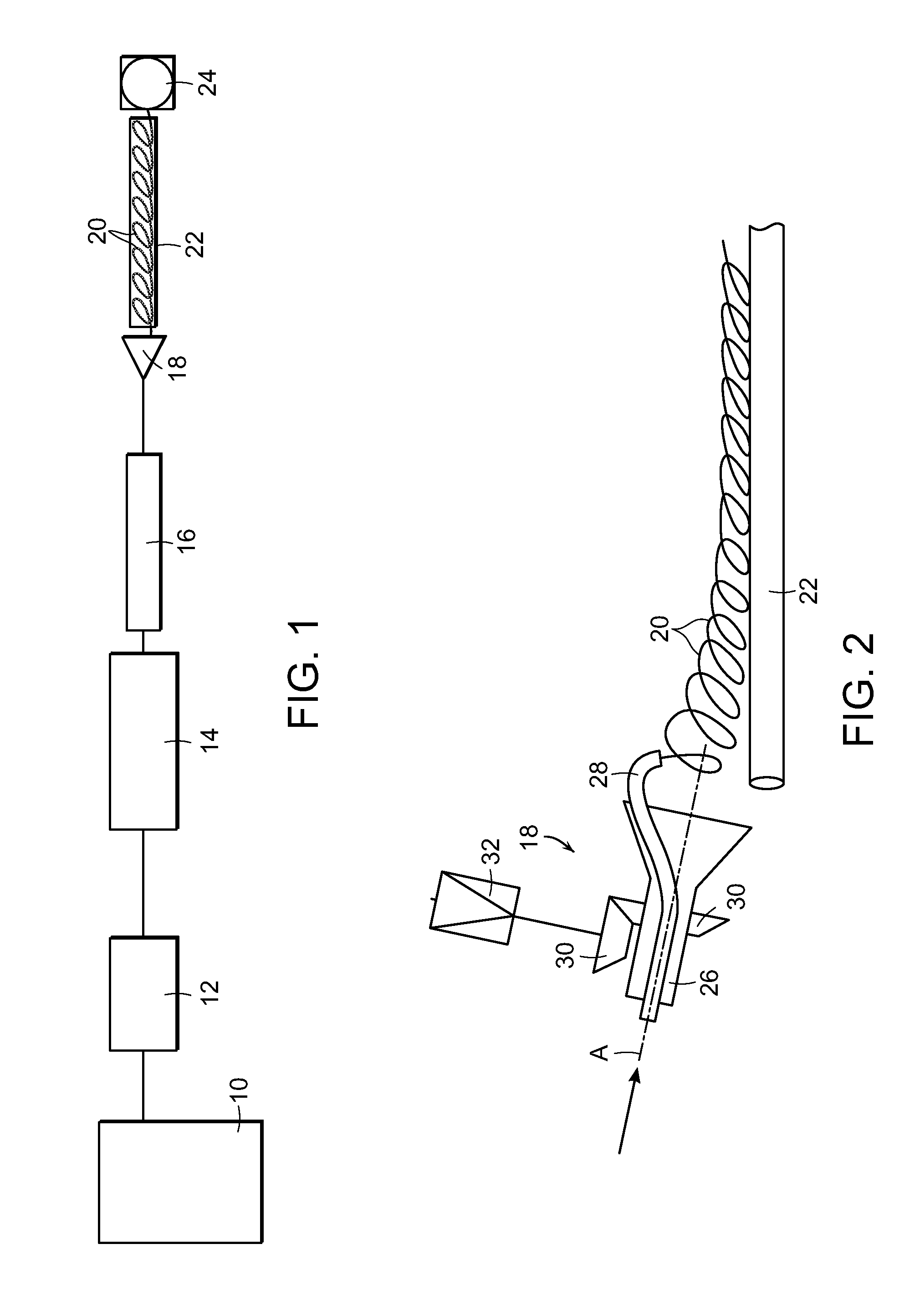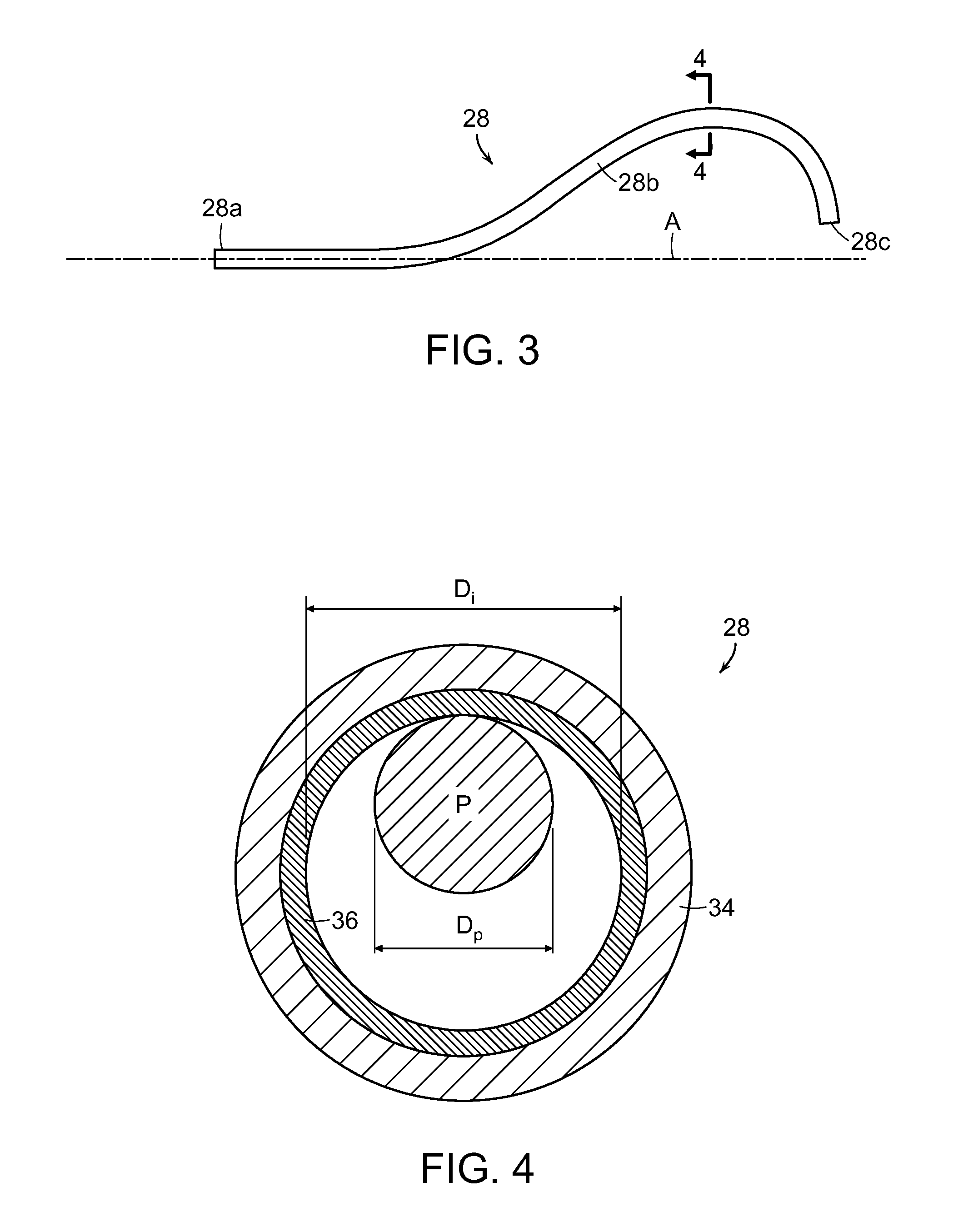Boronized laying pipe
a technology of laying pipes and boronized slurry, which is applied in the direction of solid-state diffusion coating, coatings, manufacturing tools, etc., can solve the problems of affecting the useful life of laying pipes, affecting the uniformity of cooling, so as to increase the resistance of laying pipes and increase the useful life of such pipes
- Summary
- Abstract
- Description
- Claims
- Application Information
AI Technical Summary
Benefits of technology
Problems solved by technology
Method used
Image
Examples
Embodiment Construction
[0016]With reference to FIGS. 3 and 4, a laying pipe 28 in accordance with the present invention is configured for rotation about axis A. The pipe has an entry and 28a aligned on axis A to receive a hot rolled product, with a curved section 28b leading to a delivery end 28c spaced radially from axis A. The curved section defines a guide path configured to form the product into a helical formation of rings (as shown at 20 in FIGS. 1 and 2). As shown in FIG. 4, the laying pipe comprises a ferrous wall 34, with an interior surface layer 36 against which a hot rolled product P is confined for movement along the guide path defined by the pipe. The ferrous wall 34 has a hardness of between about 330-430 knoop (HK100). The interior surface layer 36 comprises a wear resistant boronized layer with an elevated hardness of between about 1600-2300 knoop (HK100).
[0017]The boronized layer 36 results from subjecting the interior pipe surface to a thermochemical treatment in which boron atoms are d...
PUM
| Property | Measurement | Unit |
|---|---|---|
| temperature | aaaaa | aaaaa |
| speeds | aaaaa | aaaaa |
| temperature | aaaaa | aaaaa |
Abstract
Description
Claims
Application Information
 Login to View More
Login to View More - R&D
- Intellectual Property
- Life Sciences
- Materials
- Tech Scout
- Unparalleled Data Quality
- Higher Quality Content
- 60% Fewer Hallucinations
Browse by: Latest US Patents, China's latest patents, Technical Efficacy Thesaurus, Application Domain, Technology Topic, Popular Technical Reports.
© 2025 PatSnap. All rights reserved.Legal|Privacy policy|Modern Slavery Act Transparency Statement|Sitemap|About US| Contact US: help@patsnap.com



